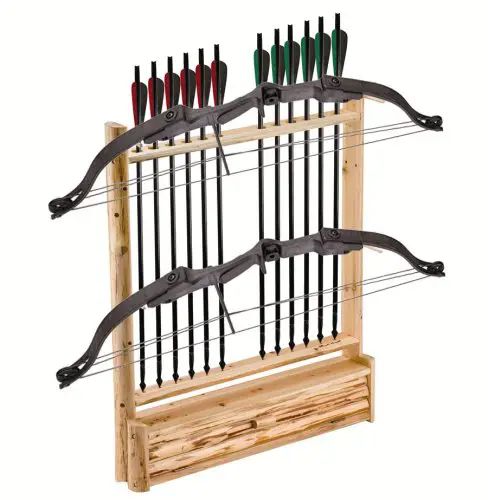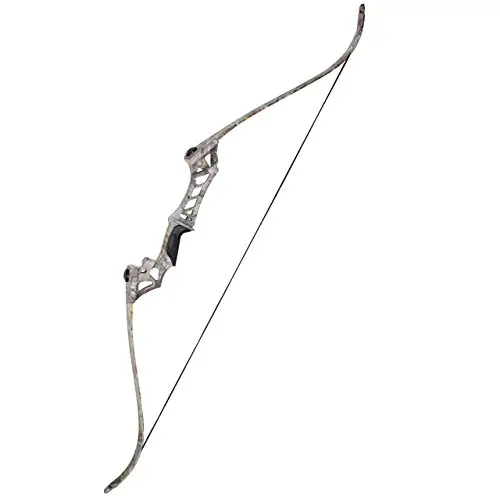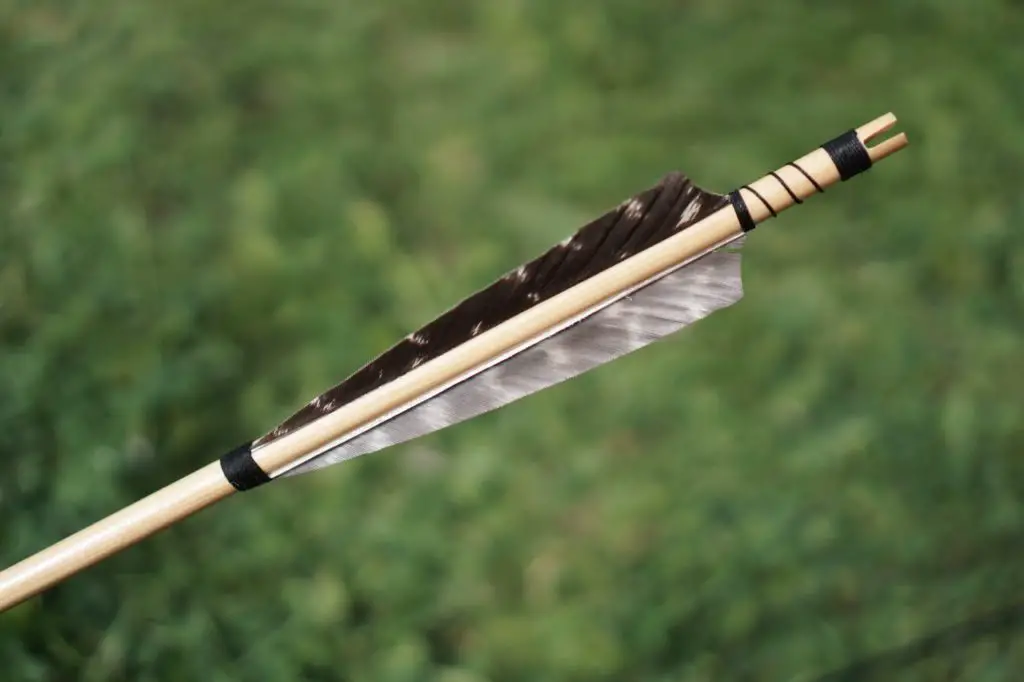Most people, when they hear the word hunting imagine a rifle or compound bow. Very few people would even think of hunting with a recurve bow. The question is, how hard is it to hunt with a recurve bow.
The earliest known evidence of archery dates back to around 60,000 years ago. Until the invention of firearms around the 9th century, archery was one of the most common methods of warfare and hunting. The arrival of firearms made bows obsolete. Firearms have vastly superior killing power and can be used very effectively at far greater distances than bows.
In more modern times, archery has been mostly a competitive sport. Over the centuries, several attempts were made to revive the sport but it has never ever taken hold again as a major hunting method.
In many countries, archery is still practiced in hunting. It would be fair to say, though, that it is a small number of enthusiasts. Hunting is not an easy activity. Hunting with a bow is somewhat more difficult. Hunting with a recurve bow even more so.
Any form of hunting requires a hunter to have certain skills and to observe a few basic precautions. Bowhunting, however, requires specific skills that make it much more challenging.

Recurve Bow Hunting Range Range
Consider that some rifles can kill an animal at a distance of over 200 meters. With a bow, the distance is seldom more than 30 meters or so, and most frequently less than 20 meters.
It’s important to understand your range limitations. Experienced hunters consider you proficient if you can group all your shots within a 6-inch circle at any given distance. That takes some practice.
It also sets your limits. If you’re a 15-meter bowhunter you really shouldn’t try to shoot an animal from 20 meters. Simple as. You can increase your range slightly with a lot of practice.
Your draw weight will also increase with practice. Don’t rush it though. Going long on your range too quickly will just result in a bunch of poor shots and a dent in your self-confidence. Take it slowly and with conviction.
Being Stealthy When Recurve Bow Hunting
Getting up so close to your prey is quite a challenge in itself. Animals have exceptionally well-developed senses. Firstly, it would be almost impossible to get that close unless you’re almost invisible. Camouflage is not negotiable.
You need to know how the wind is blowing. Trying to approach an animal from upwind is futile. Any flow of air from you towards the animal will carry your scent and any noise that you may make.
These three things are common in any form of hunting. If your prey sees, hears, or smells you, he’s gone. However, due to the extremely close range of shots generally in bowhunting, it’s much more difficult to remain undetected.
Your camouflage must cover you completely, including your head and hands. The head and hands are usually exposed and they are also the parts of your body that move the most. At close quarters an animal will discern unnatural lines, shadows, and colors very quickly. It’s also very important that the camouflage must blend in with the environment you’re hunting in. What works in one area will not necessarily work in another area.
Approaching the animal against the wind not only helps to avoid your scent reaching the animal. It also helps to mask any noise you may make as you approach.
Scent control is far more important than in rifle hunting. Hunting gear should all be washed down or sprayed with scent-free cleaners. They should, preferably at all times, be kept in scent-free bags. Before embarking on a hunt, the hunter should shower or bathe with scent-free soap and shampoo and use scent-free towels and other bathroom requisites.
The hunter should not enter any shops or gas stations on the way to the hunting site. These facilities have strong smells and will compromise scent control very quickly. Some hunters would go as far as not wearing any of the hunting gear while driving and only deploy it in the open near the hunt.
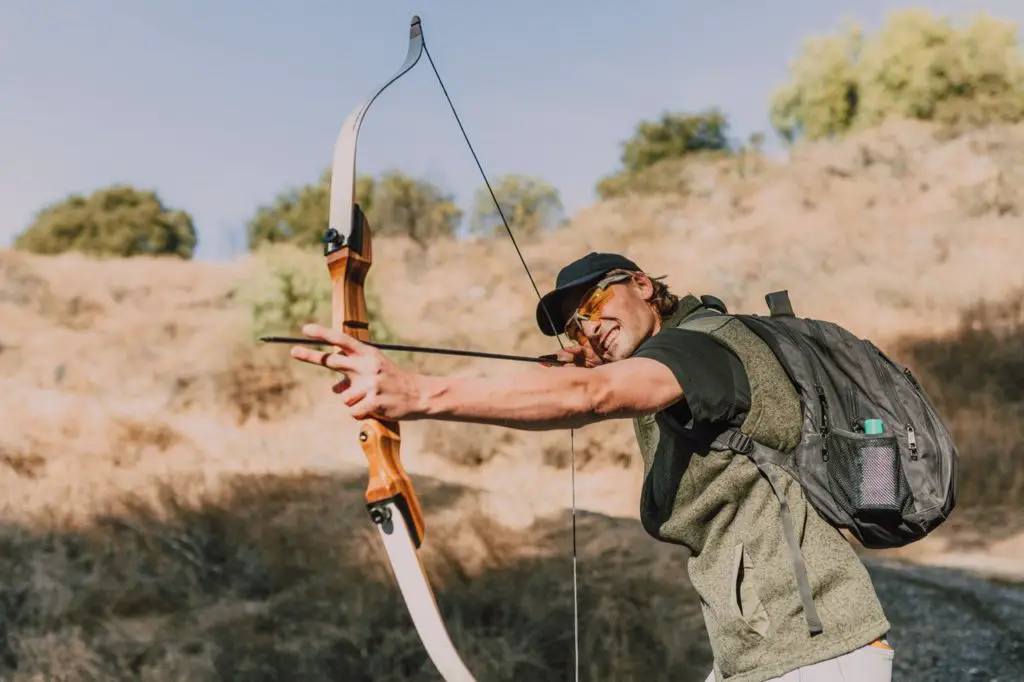
The other stealth aspect is noise. Or, rather, total lack thereof. This is one activity where silence is golden. Animals can sense a sound that is out of place even if you can’t hear it. And this is not just about avoiding blundering through the bush. This is about ensuring that your gear doesn’t rustle or squeak. Even your clothes.
You should avoid wearing weatherproof clothing unless you plan to hunt in very bad weather. These clothes tend to be stiffer and a bit creaky. Try to stick to soft fleecy fabrics or cotton blends. Also, wash the clothes before you hunt to get out any starches that new clothes have usually been treated with.
Your equipment must also be soundproofed as much as possible. This includes your backpack and bow. Yes, the bow as well. Where a lot of bullets are fired at velocities exceeding the speed of sound, a recurve bow fires an arrow at less than a third of the speed of sound.
In other words, a bullet will hit the target before the sound of the shot arrives. With a bow, the twang of the bowstring could be heard before the impact of the arrow
Test all your clothes and equipment thoroughly at home. At 30 meters this lag could be as much as a quarter of a second. Enough for the animal to react and to start moving. The animal needs only move a couple of inches to turn your fatal shot into a wounding shot.
Draw Weight
Pulling the string of a bow is considerably more difficult than pulling the trigger on a rifle. For big game, a bow should have a draw weight of at least 35 pounds. For the really big animals, weights go over 50 lbs.
Most women draw 30 to 40 pounds while a grown man can draw 50 to 60 pounds. You can see, therefore, that a certain degree of strength is required.
A higher weight is obviously better as it fires the arrow a lot faster. A faster arrow penetrates better and improves the chances of a fatal shot. The thing is to stay within one’s capabilities. Having a draw weight that is too high will affect accuracy. And inaccurate shots are bad shots. They, more often than not, wound an animal without killing it.
Your choice of arrows also plays a part. Arrows should be consistent in weight, length, and spine. The arrows should also be matched to the draw weight and length. This will optimize accuracy and consistency in the field. Arrowheads should enter with the least possible loss of energy. This will increase the depth of penetration and result in more humane shots.
Responsible Recurve Bow Hunting
Bowhunting comes with responsibilities. Hunters must know and respect laws applicable to the area and type of game. They also have to strive to make all their kills as quick and humane as possible.
Although many people would argue that bowhunting levels the playing field between hunter and prey, making it more humane.
However, studies have shown that there is a far higher incidence of wounded animals being lost than with rifle hunting. In fact, the loss rate in bowhunting is around 50% compared to only about 7% in rifle hunting.
These responsibilities mean that bowhunters must:
- Not compromise accuracy. Use appropriate equipment and practice regularly.
- Be selective with their shots. A hunter should not shoot if he is not confident of a kill
- Treat every shot as a hit unless they could clearly see the arrow miss.
- Follow up every shot as thoroughly as possible. Make every effort to recover the animal.
In Conclusion
You can now, perhaps, understand how much more complex and demanding recurve bowhunting is compared to rifle hunting. There is one further differentiation, though.
Hunting with a recurve is more difficult than with a compound bow or a longbow. An arrow shot with a recurve bow does not fly as fast and straight as one fired from the other bows. Shot placement is, therefore, much more important. The shots also have a much shorter range. Having to get closer to the target also increases the effort required to avoid detection. Overall, hunting with a recurve bow is a lot more demanding and unforgiving than with a rifle or any other bow.
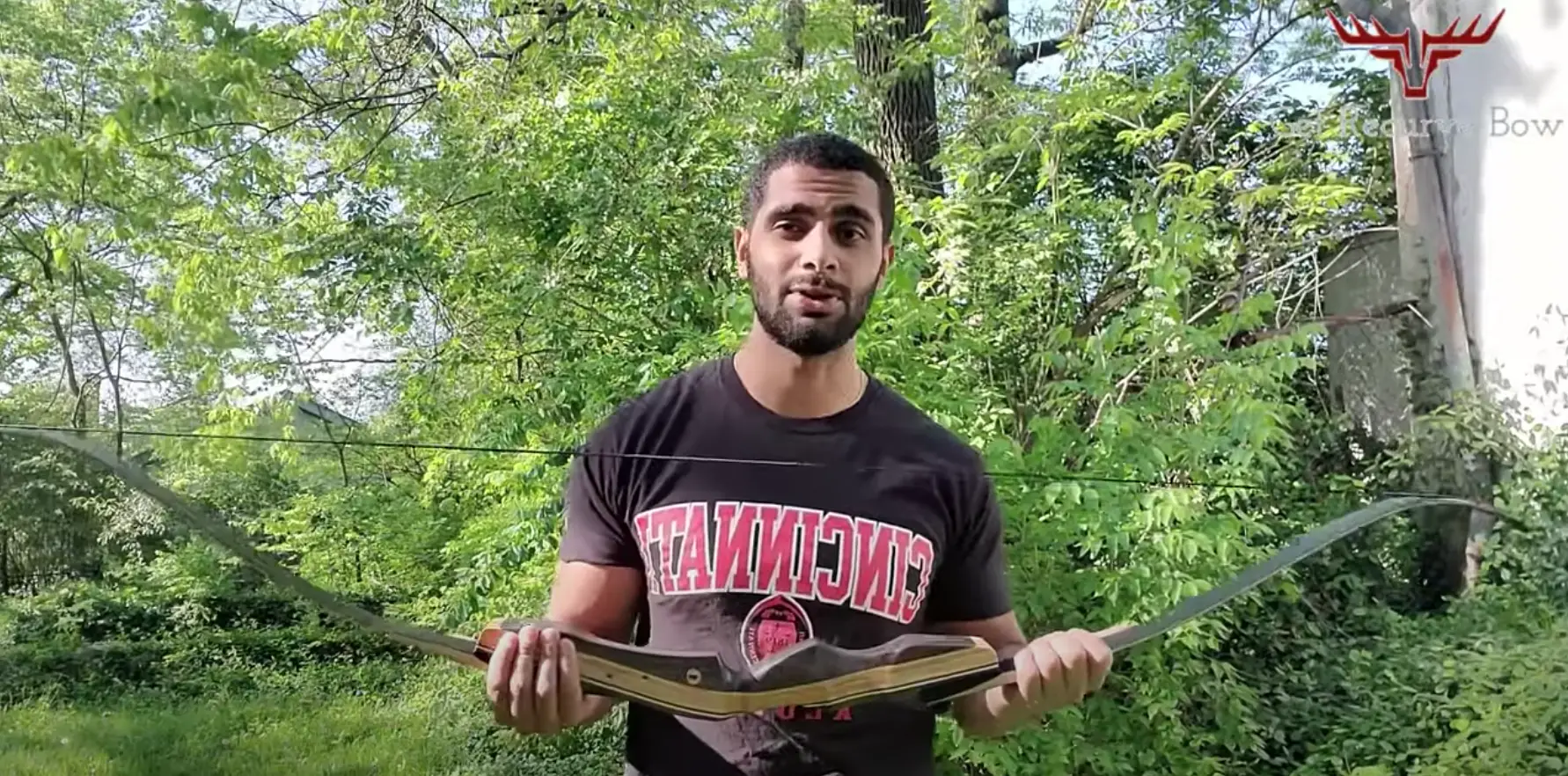
Archery is my hobby & I usually hunt and play on weekends and after work. It’s a passion since I was very young and I love writing about it as well to continuously learn more and share the love of archery with others!

